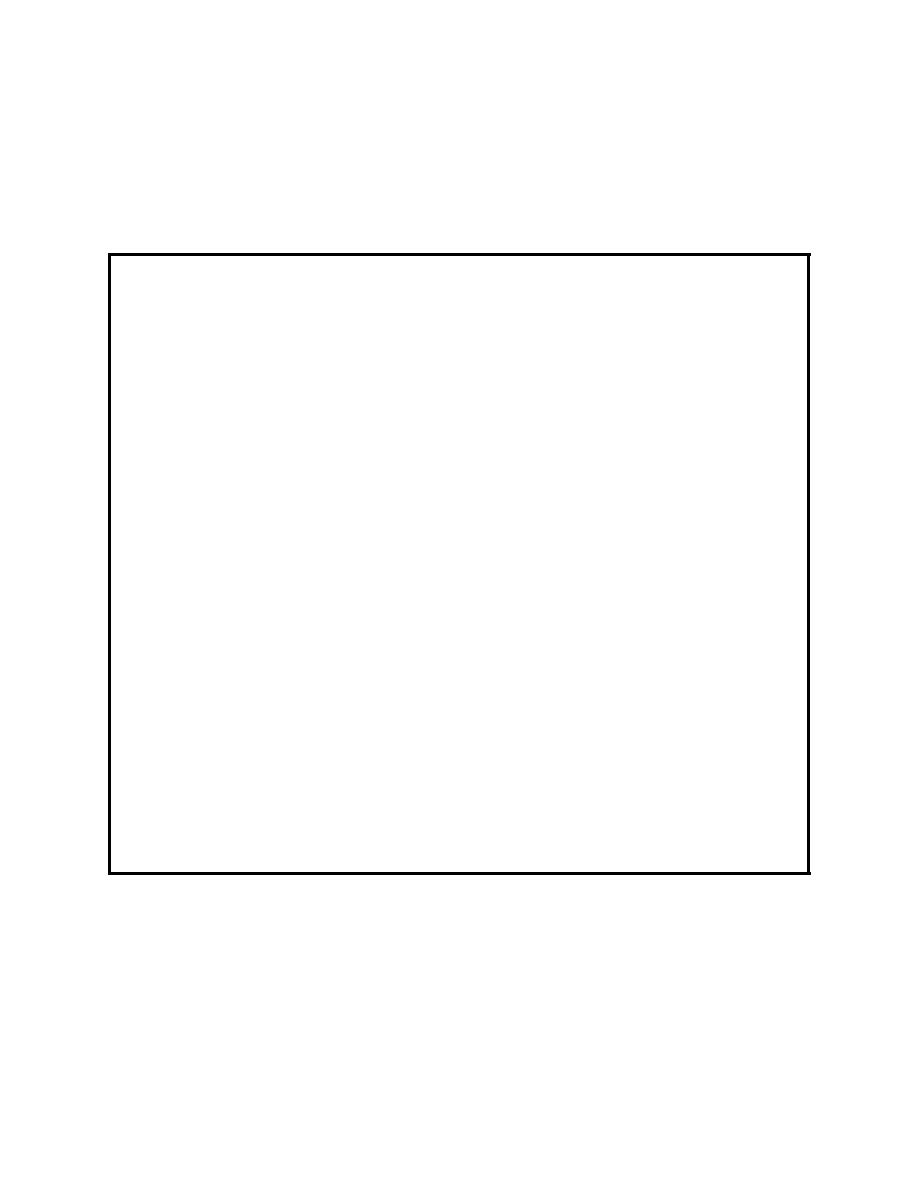 |
||
|
|
||
| |||||||||||||||
|
|
 Technical Note DOER-N4
May 1999
EXAMPLE APPLICATION: A sample application of the grain-size depth of residence screening
model is given below. In this example, the driving force for sediment motion is a current of
0.2 m/sec (0.66 fps) combined with a wave that is 3 m (10 ft) high with a 10-sec period. The
sediment is identified by a median grain size (D50) of 0.2 mm (0.0079 in.). The program input and
output is provided below where program text (requests for information) is given in italics and
user-provided answers are given in bold.
Program to determine depth of residence
Input wave height , wave period, current
velocity and median grain size. Program
determines depth at which sediments will
remain stationary at these conditions.
Note: Input values must be greater than 0
Do you want to input in
metric (1) or English (2) units?
>1
Input wave height (m)
>3
Input wave period (s)
>10
Input current velocity (m/s)
>0.2
Input D50 grain size (m)
>0.0002
FOR THE FOLLOWING CONDITIONS:
wave height =
3.00000
(m)
wave period = 10.0000
(s)
current velocity = 0.200000
(m/s)
grain size =
0.200000E-03 (m)
SEDIMENT WILL NOT MOVE AT A
DEPTH OF 26.5176 m or greater
As the example shows, the program determined that for the given hydrodynamic conditions, the
given sediment will be stable at water depths greater than 26.5 m (87 ft). Hence, if this screening
tool was being used to determine the depth at which sediments for a dredged-material capping
project would be stable, then as an initial estimate one could say that depths would have to be greater than
26.5 m (87 ft). Conversely, if the desire was to have the sediment move under the given conditions,
then as an initial estimate one could say that the depth would have to be less than 26.5 m (87 ft). The
results should be considered a rough estimate. If the actual depth at which the sediment was to be
placed was nearly 26.5 m (87 ft), then a more thorough evaluation of the site would be required. If
the actual placement site was much deeper or much more shallow than 26.5 m (87 ft), one could
5
|
|
Privacy Statement - Press Release - Copyright Information. - Contact Us - Support Integrated Publishing |